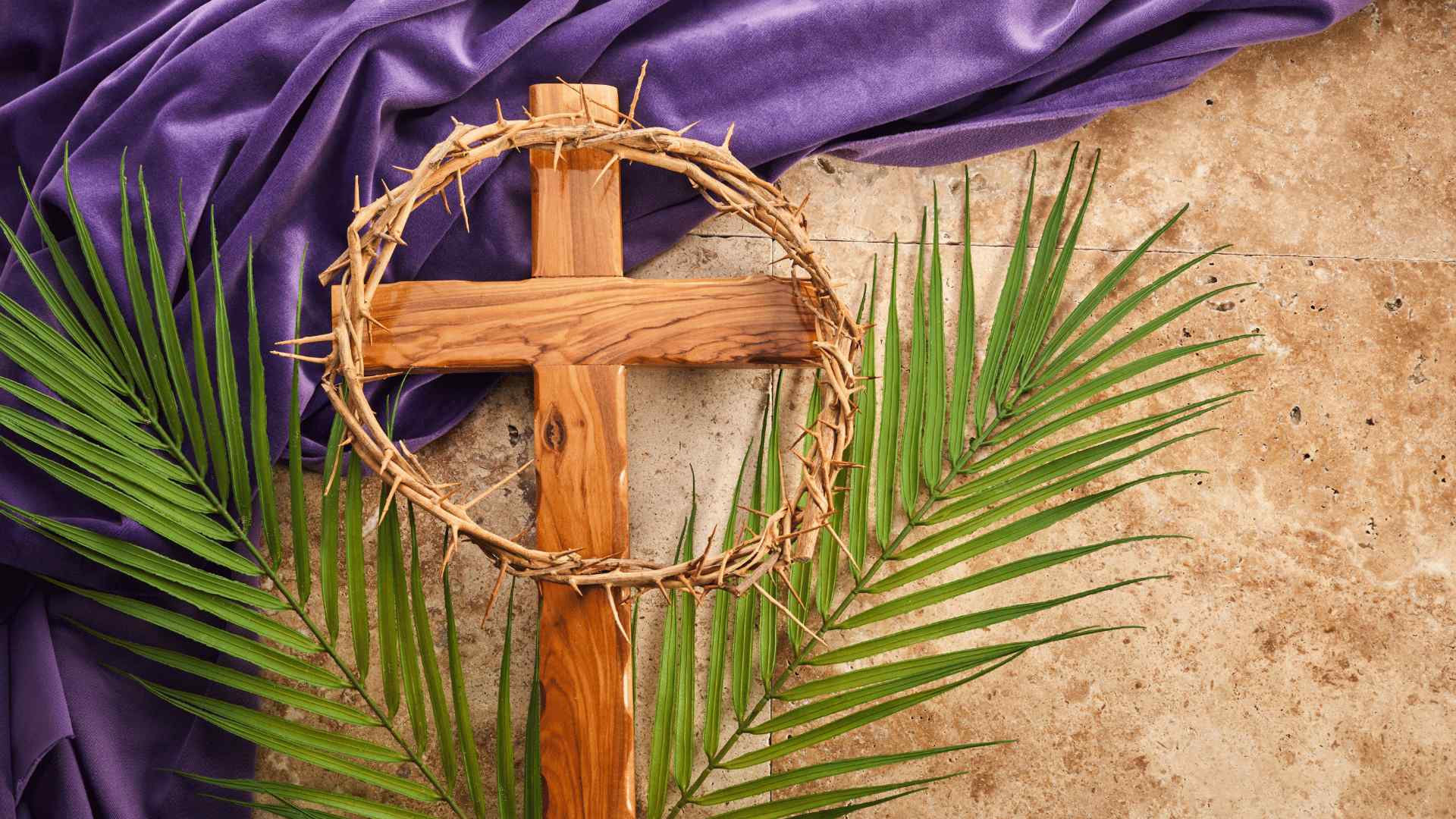The Lenten Season, or "Mahal na Araw," is a significant period for Filipino Catholics as it commemorates the passion, death, and resurrection of Jesus Christ. It is a time for reflection, penance, and spiritual renewal. During this period, we engage in various practices and traditions to deepen our faith and show our devotion to God. Here are some of the Lenten practices, traditions, and culture in the Philippines:
Ash Wednesday
Ash Wednesday is a significant day as it signifies the beginning of Semana Santa. The tradition of receiving ashes on the forehead during this day is a symbol of penance and humility. It serves as a reminder for Catholics to reflect on their mortality and repent for their sins.
Fasting and abstinence are also observed during this day, where Catholics abstain from meat and fast by eating only one full meal and two smaller meals that do not equal the full meal. The practice of fasting and abstinence continues on all Fridays of Lent.
Palm Sunday
Palm Sunday marks the beginning of Holy Week, the most solemn week in the Catholic Church. It commemorates Jesus' entry into Jerusalem, where people welcomed him by waving palm leaves and branches.
In the Philippines, Catholics gather in the house of God to receive blessed woven palm fronds, which they bring home and display as a symbol of faith. The woven palm fronds are also believed to provide protection from harm and evil spirits. Many use the blessed woven palm fronds as a form of protection by placing them in their cars or hanging them on their doors.
This tradition is known as "pagpapahid ng palapas," or the wiping of palm fronds, where the palm fronds are waved over people or objects to bless and protect them. The blessed palm fronds are kept throughout the year and burned on Ash Wednesday to make the ashes used during the Mass.
Senakulo
Senakulo is one of the many popular and unique traditions in the Philippines during this time of the year. It is a dramatic reenactment of the passion of Christ performed by local actors and performers in communities throughout the country's seven different churches.
This play is usually held during the year's Holy Week itself, and the audience follows the actors as they depict scenes from Jesus' life, including his trial, crucifixion, and resurrection. Senakulo is often performed in open-air stages, such as in town plazas or in front of churches. The actors wear traditional costumes, and music, prayers, and readings from the Bible accompany the play. San Pedro Cutud, a barangay in San Fernando City, Pampanga province, has become infamous as a site of a senakulo that aims to more fully replicate the bloodiest and most violent aspects of Jesus' Passion. Many foreign tourists would come to the country to witness this tradition in person.
In some regions, Senakulo performances include other elements such as fun activities such as cultural dances, processions, and pageants. The actors also perform various roles, such as soldiers, angels, and apostles. It is a powerful reminder of the sacrifice Jesus made for humanity and a way to reflect on one's faith and spirituality.
Visita Iglesia
Visita Iglesia is another popular Catholic tradition in the Philippines that takes place during Holy Week. This practice involves seven church visits in one day as a way of reflecting on the passion of Christ. It is typically done on Maundy Thursday or Good Friday, and devotees spend time in each Church praying and meditating.
Visits during this tradition are usually chosen based on their historical significance, architectural beauty, or proximity to the devotee's home. It is a way for Catholics to pay homage to these sacred spaces while also reflecting on the events of the passion and death of the Son of God.
This tradition is a solemn and significant religious observance for many of us, often done with family and friends. Usually, people from metro manila travel to different provincial churches to visit and pay their respects. This is also one of the holy week traditions in church visitation in the Philippines. Some devotees also perform other acts of penance during this time, such as fasting, abstaining from meat, or carrying a cross as a symbol of their faith. Ultimately, this is known to be a way to deepen one's connection to God and strengthen one's faith during this season.
Good Friday
Good Friday is the most solemn day of holy week traditions during "Mahal na Araw." It commemorates the crucifixion, the last supper, and the death of Jesus Christ. In the Philippines, the majority of Christian countries, it is a day of fasting and abstinence. Catholics participate in various holy week traditions such as the Stations of the Cross, the Passion of Christ, and the Veneration of the Cross.
On this day, the holy week procession takes place in the middle of the summer heat, where Catholics would line up and metaphorically be sending the dead body of the Son of God to his tomb. You can also witness older girls wearing a black veil to commemorate their grief. One of the things to look for is a copy of the miraculous imprints of Jesus Christ's face.
Many superstitions, like making sure that you don't bruise yourself this day because the Lord is dead and may not heal you, arise within the many communities as we are known to be very superstitious people.
Sabado de Gloria
Sabado de Gloria, or Black Saturday, is celebrated on Holy Saturday and marks the end of the Lenten Season. In the Philippines, it is a day of joy and celebration; moving saints and Catholics participate in the Salubong, a traditional procession where an image of the resurrected Christ meets an image of the Blessed Virgin Mary.
This is usually played by older girls dressed as angels, and other members of the Church will play the other roles in the church patio. In this holy lenten presentation staged called "Salubong," the Virgin Mary, alongside twelve men, will now see the risen Christ and his face again after he was dead for three days. A blessed sacrament is then celebrated afterward as it will fall under a palm Sunday mass.
Pabasa ng Pasyon
Pabasa ng Pasyon is a popular Lenten tradition in the Philippines, where devotees gather to chant the Pasyon. This narrative poem tells the story of Jesus' passion, death, and resurrection.
This practice is often done in homes, churches, or public areas and can last several days, with participants taking turns reading the verses. The practice is believed to have originated in the 1800s and is still popular in many parts of the country today.
Lenten Fasting
Lenten fasting is a significant practice during "Semana Santa." It is a form of sacrifice and penance that aims to strengthen one's faith and spiritual growth.
Apart from the lenten fast and abstaining from meat, some also choose to give up certain luxuries or activities during the Lenten Season as a form of sacrifice. Fasting and abstinence are seen as acts of self-discipline and devotion to God.
Moreover, some areas in the Philippines also have unique Lenten traditions, such as the "Moriones Festival" in the town plaza Marinduque, where men dress up as Roman soldiers and reenact the story of Longinus, the centurion who pierced Jesus' side with a spear.
Iglesia Filipina Independiente or Philippine Independent Church, and most Protestant communities, Holy Week ("Mahal na Araw" in Tagalog; "Semana Santa" in Spanish; both terms are used widely) is an important religious observance. Catholics make up 80 percent of the population in one of Asia's only predominantly Christian nations, and the Church is one of the country's strong sociopolitical powers. The Lenten Season is an important time for Filipino Catholics, and they engage in various practices and traditions to deepen their faith and show their devotion to God. These are not just holy week traditions in the Philippines but also a part of our culture and religion. Television and radio stations would play inspirational programs on national TV during these times. From Ash Wednesday to Easter Sunday, Filipinos commemorate the passion, death, and resurrection of Jesus Christ through various activities such as Senakulo, Visita Iglesia, and fasting. These traditions have been passed down from generation to generation and continue to be an integral part of Filipino Catholic culture.
For more information on Vista Residences, email [email protected], follow @VistaResidencesOfficial on Facebook, Twitter, Instagram, and YouTube, or call the Marketing Office at 0999 886 4262 / 0917 582 5167.










